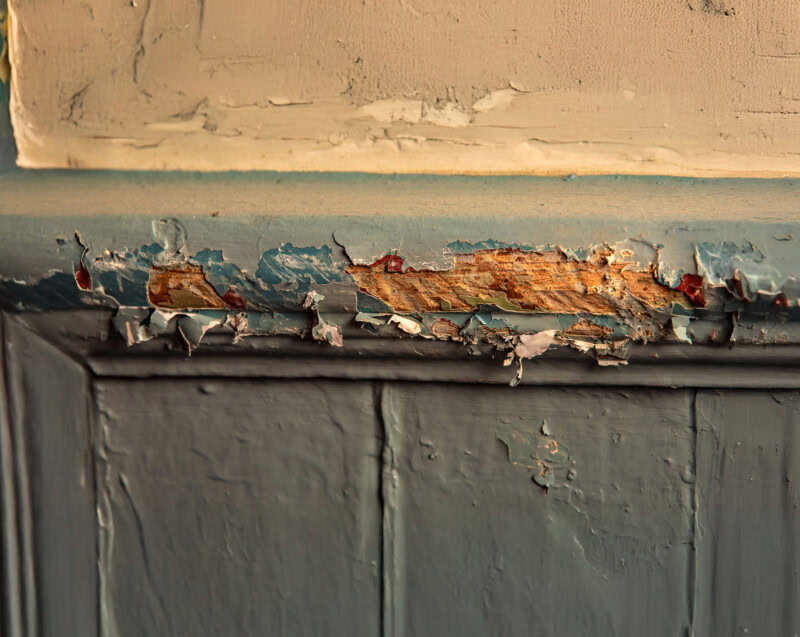Every home tells a story—of family, growth, and everyday routines. But in many older homes, hidden lead hazards can quietly shape that story in ways families never expect. National Lead Poisoning Prevention Week reminds us that prevention begins with awareness. To help families take meaningful action, CTEH spoke with Chad Hyman, Senior Consultant in resilience & recovery, who offered practical insight into recognizing and safely addressing lead at home.
Understanding Where Lead Lingers
Most people know to be cautious about lead-based paint in older buildings, especially in pre-1978 homes, schools, and community spaces. What often goes overlooked, though, are the exterior places where lead can linger. Railings, columns, storm doors, and other outdoor metal features were commonly coated with durable, lead-based paints designed to withstand weather. As these finishes age and break down, flakes and dust can settle into the soil near the home’s foundation.
Inside, paint on windowsills, trim, and other pull-up points can release particles as it deteriorates. These areas often collect dust where children play and explore. The individuals most affected are often the smallest ones. Toddlers are naturally curious, spending much of their time on the floor or near windows, touching surfaces, and putting their hands or toys in their mouths. These normal behaviors increase the likelihood of contact with dust or paint chips. That makes preventive cleaning and awareness especially important for families with young children.
Spotting the Signs
A simple visual cue can help families decide when to pause and reassess. Lead-painted surfaces often show a distinctive cracking pattern called “alligatoring” as they deteriorate. The painted surface cracks in numerous places created a design similar to the pattern of alligator scales. That look is a red flag worth investigating before sanding or scraping begins. Recognizing signs of deterioration is only half the equation. The next step is managing how the space is cleaned and contained to prevent those particles from circulating through the home.
Cleaning and Containment
Dry sweeping, dry dusting, or using compressed air can push tiny particles into the room and around the house. Wet wiping and wet mopping do a better job of removing dust from surfaces while minimizing the potential of sending it airborne. When vacuuming, a HEPA-rated machine is a smart choice because it captures very small particles rather than exhausting them back into the room. Many newer household vacuums meet HEPA standards, while some older bagged models do not.
After cleanup, a simple “white-glove” check—running a clean hand across a surface—can show whether more work is needed before anyone returns to the space. Professionals use the same step before lab testing because a surface that fails a visual or tactile check is likely to fail analytically.
For renters, awareness and communication are key. Those living in leased homes or apartments should document visible deterioration with photos and dates, then communicate concerns in writing to landlords or property managers. It’s also appropriate to ask about safe work practices before any maintenance or repair work begins. In many cases, property owners must authorize formal testing or remediation, so early and clear communication helps prevent delays or misunderstandings.
Health Effects and When to Test
Lead exposure does not affect only children. Adults can experience symptoms as well. The signs are often vague, sometimes presenting as general fatigue, body aches, or flu-like discomfort. Because these symptoms overlap with common illnesses, blood testing remains the most reliable way to determine exposure for anyone in the household. Families should consult their family doctor or healthcare provider if they have concerns, especially when living in or renovating older homes. Regular check-ins, open discussion with healthcare professionals, and consistent cleaning all work together to reduce long-term risk.
Simple Steps for Safer Homes
All of these preventive steps work best when they become routine. For families looking to start small, the following checklist offers simple, high-impact actions that make everyday maintenance safer and easier to manage:
- Adopt a regular cleaning routine with attention to floors, window sills, and other high-touch surfaces in rooms where children play.
- Vacuum with a HEPA-rated unit and replace filters per the manufacturer’s instructions.
- Use wet methods for dusting and floor care rather than dry sweeping or dusting.
- Inspect interior and exterior paint, along with metal features like railings and storm doors, for peeling, chipping, or curling; treat those areas as higher risk.
- Plan carefully before sanding, scraping, or demolition-especially on pre-1978 paint, older tile or glazes, and exterior metal. Set up containment, protect HVAC, and prepare for HEPA cleanup.
- Call qualified professionals if deteriorating paint or suspect finishes are found. Ask about lead-safe training and work practices, and expect visible containment and thorough cleaning.
Our mission at CTEH is rooted in protecting people, families, and communities from environmental health risks. Sharing practical information like this supports that goal—helping families make informed decisions that protect the spaces where they live, work, and grow.




